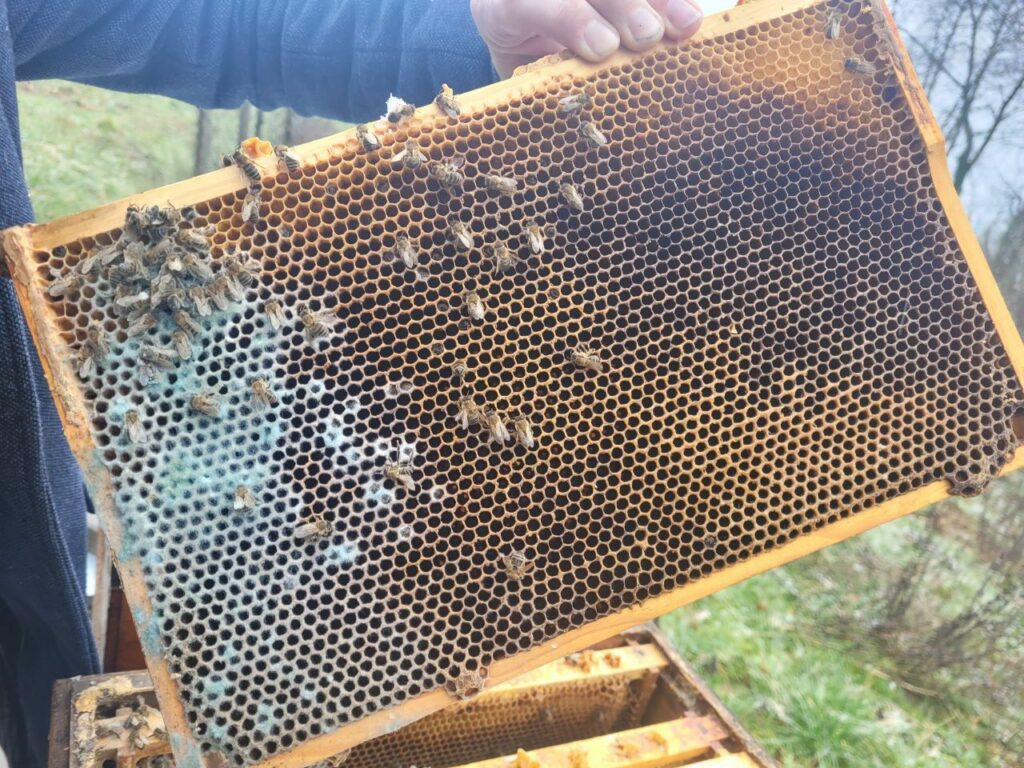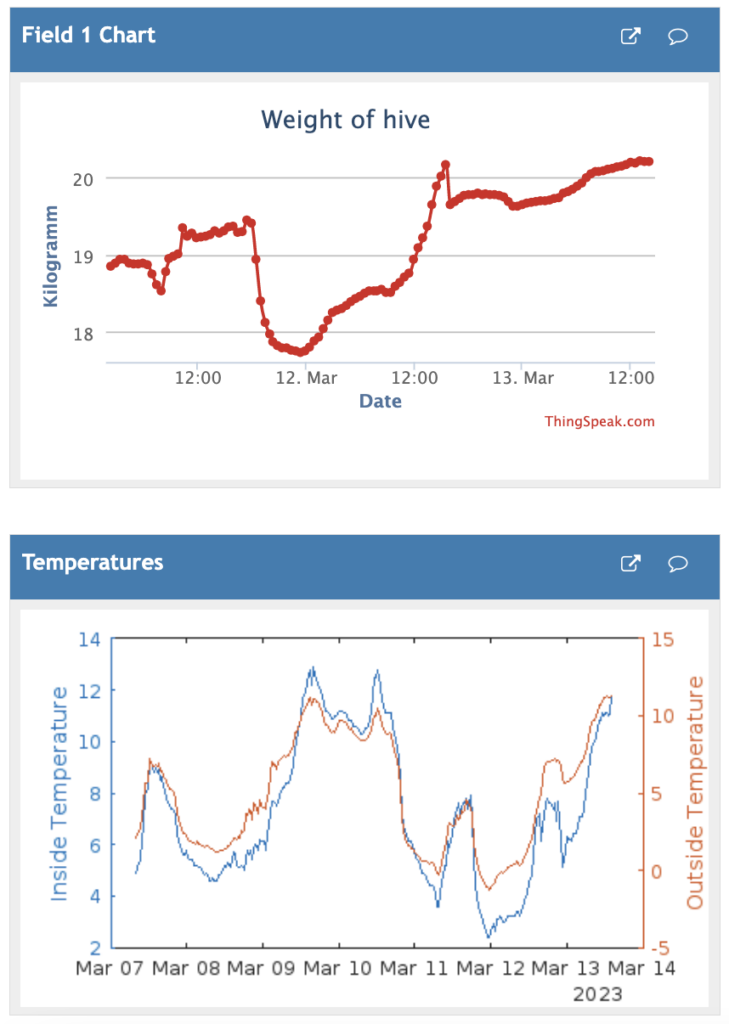“Get up girls!” – Even if that sounds like a typical morning in some children’s room, we are actually in our Seibert field and are calling for our bee colonies.
After a cold and gray winter we are now entering March: the days are getting brighter, the sun is getting stronger and nature around us is awakening to new life. But our honey bees don’t really have to wake up. Unlike most insects, they do not hibernate deeply during the winter.
Keep warm, please!
The so-called winter bees hatch in late summer and autumn. Unlike their spring and summer siblings, they don’t have an explicit collection or building mandate. Her main task is to bring the bee’s nest with her queen over the winter. Specifically, this means keeping the inside temperature in the hive at at least 10 degrees Celsius. To do this, the winter bees form a ball in which the bees sitting outside can vibrate with their flight muscles and thus generate temperatures of up to 30 degrees Celsius. It is regularly exchanged from the inside to the outside.
Not an easy job that requires a lot of energy in the form of sugar. The bees usually obtain this from the collected honey or – if we as beekeepers have harvested it – from the sugar syrup fed in autumn. It is precisely this way of life with the storage of honey that makes honey bees interesting for us humans in the first place. This very monotonous requirement profile has the advantage that the life expectancy of winter bees is three to four months, which is significantly higher than that of summer bees. The latter only get about four to five weeks with their backbreaking job.
How are our Seibert bees doing now?
Every year all beekeepers in Germany ask themselves: “Was the food enough for the months? Did enough winter bees make it? Are the colonies still alive?” Frequently opening the hive lid is very tempting to satisfy one’s own curiosity – but of course it is highly counterproductive. Why? With each opening, the accumulated heat dissipates within a few seconds. The people “look dead” – an unfortunately widespread phenomenon among beekeepers who are just new to it.
Now, in the first warm days, you can already tell from the flight hole how our protégés are doing. The first bees come out on their cleaning flights (as you can imagine there are no toilets in the hive) and the first early bloomers are looked for. Snowdrops, hazelnuts and willow slowly open the buffet and provide protein in the form of pollen. The colony needs these to feed the first generation of new workers, which are now slowly hatching and replacing the winter bees.
A very exciting and critical phase in the bee year: If our queen starts to lay eggs too early due to mild winters and there are renewed longer cold snaps, too much energy is used, causing the remaining supplies in the honeycomb to run out rapidly. This threatens a late starvation on the home stretch. Unfortunately, one of our colonies starved to death in mid-February and did not survive the winter. The other four colonies have been able to manage their food better and are slowly starting to breed again.

I, Tom, am currently closely monitoring the four peoples and, in an emergency, I am available with emergency rations of honey and powdered sugar. All are looking very good at the moment and we are confident that they will develop into large and strong races in the next two months.
From April, the Seibert Media employees can come back to the fields and get a taste of my beekeeping. (Note: We can’t wait! 🐝)
Easily check the current status of our beehives
If you want to follow the development of Queen Bee Elizabeth III. and follow their state live, take a look at ours Grafana-Dashboard over.
Our HoneyPI is online again and regularly sends us the weight as well as the outside and inside temperature. Here you can follow how the mass is slowly but steadily increasing over the next few weeks. Of course, this is not honey yet, but the first generation of hatching and growing worker bee larvae.
Further information
Go for Gold: the 2nd honey extractor at Seibert Media
Tasted and found delicious: the first Seibert honey from the Seibert bees from the Seibert field
Migration of peoples: with 100,000 bees to the Seibert field

